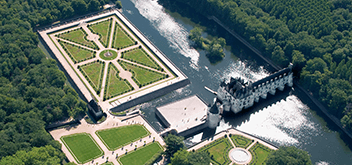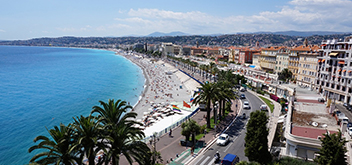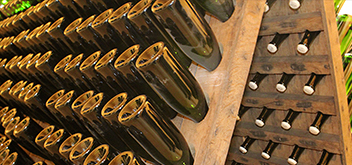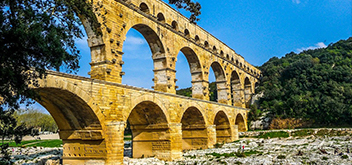No products
Bordeaux region wine tours
Our wine tours of the Bordeaux region and Bordeaux city offer the best of our local experts and guides’ selections among the already most renowned and oldest vineyards in the world. You will experience the most fascinating cultural and historical heritage of Bordeaux ancient past while immersing in modern and traditional wine culture, visiting historical sites and renowned vineyards and wine tasting the best selections of wine.
The best of Bordeaux heritage

It is hard to separate Bordeaux wines from their cultural and historical heritage. And there is nothing more thrilling to experience Bordeaux’s wine, food, and culture knowing that you are stepping into the heart of a long lasting historical fame.
Indeed, Bordeaux wines’ fame go way back to antiquity. Bordeaux was already starting to earn fame for its wines as far back as the 1st century AD. Romans had settled in 60BC in Burdigala, the antique name of Bordeaux, and had already started to plant and cultivate wine. From Pompei to England, Bordeaux wines of the right bank of Saint-Emilion were known all around Europe’s royal courts and churches and served to royal wedding throughout the centuries. Hence, nowadays, the Right Bank châteaux of Saint-Emilion and Pomerol are the most collectible wines produced by world famous like Châteaux Ausone, Beau-sejour Becot, or Petrus, Cheval Blanc, Figeac.
By the 13th century, Dutch were so fond of Bordeaux’ wines, they had come up with a way for the wine to last longer and not be spoiled during transport by burning sulfur in the barrels and started the tradition of aging the wine.
And in the 16th century, they will change Bordeaux wines’ fate forever by creating what is now known as the Medoc, part of the Left Bank. Motivated by the need to quicken the export of Bordeaux Wines, they dried out all the swamp lands and marshes to create agricultural lands, vineyards and direct routes to the Atlantic via the Estuary of the Gironde. It is on this piece of land that the most famous Châteaux will be born.
From the 17th century on, Wine trade was entrusted to ‘negociants’ or wine traders by the royal vineyards owners, and it is no secret that the Medoc became a refuge for the wealthy nobility. They had the vision and the money to create what we know as Bordeaux’s Medoc today. Left Bank Bordeaux wines include most renown Châteaux like Chateaux Margaux, Palmer, Pichon Longueville, Latour and Lafite.
Bordeaux is also an attractive and delightful historical and modern elegant city to experience. ‘The city on the water’ is located along the Garonne River. A harbour developed for boats to come from the Atlantic to Bordeaux using the estuary and the river. They anchored on the bend of the river that look like the crescent of the moon. Hence the name Port de La Lune. All along the harbour, are located the most prestigious 18th century building including the Grand Place de la Bourse, centered on the Three Graces fountain, overlooking the Miroir d’Eau reflecting pool. Also, public gardens line the curving river quays nearing many other monuments and museums easily explored by our walking tour. You will be transported through time, from the antiquity to modern time, with the Roman Palais Gallien the Pey Berlan tower, the St Andrew Cathedral, The St Michael Tower church, the Bell’s of Porte Caillau, the Monument des Girondins of the largest plaza of Bordeaux, Place des Quinconces. Bordeaux also hosts marvelous botanical gardens and Museum like the famous Wine Museum and its contemporary architecture, or the Fine Art Museum and History Museum of Aquitaine.
Many districts in the heart of Bordeaux are worth a visit like the famous Chartrons District, a district of Bordeaux that lies in the heart of the thriving metropolis. It is characterized by its quirky antique shops and vintage boutiques selling an eclectic mix of bric-a-brac on the banks of the river Garonne, giving it an animated and fashionable air.
Along the Quai des Chartrons where age-old wine traders’ warehouses have been converted into factory outlet shops for top sports brands such as Reebock and Le Coq Sportif. The wide pavements also boasts numerous cafés and restaurants, and make for a nice spot to enjoy a meal or coffee after a day of shopping, while looking out over the river. The St. Catherine district hosts the longest pedestrians streets filled with local, national or international shops, cafés and restaurants.
Best of Bordeaux wines
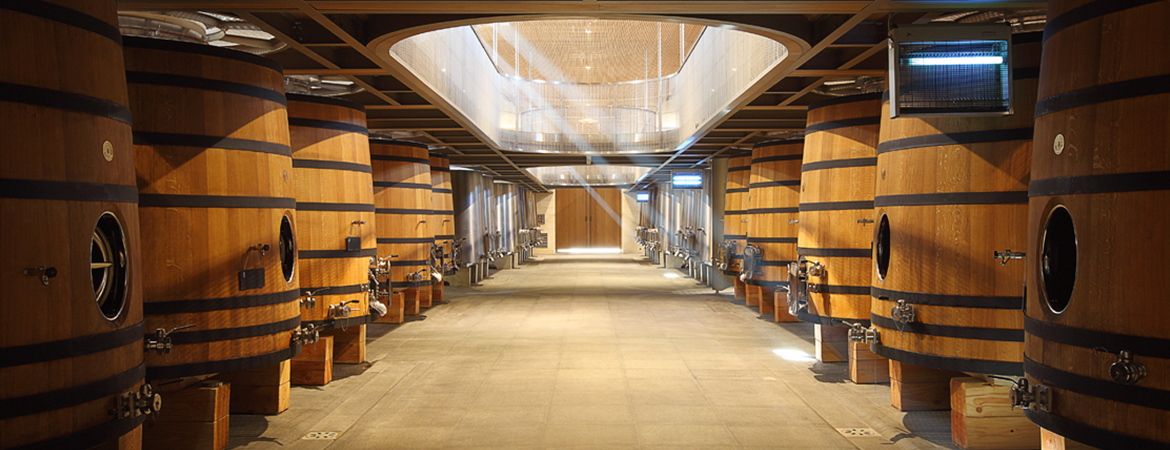
Bordeaux Wines include many famous appellations with famous red, rosé and white.
Bordeaux, Bordeaux Supérieur, Bordeaux Rosé, Bordeaux Clairet.
In those appellation The reds propose blends of Reds and Rosés with majority of Merlot, then Cabernet Sauvignon and Cabernet Franc. They are fruity, balanced with aromatic freshness, and some may have a fine woody aroma. They are best served with convivial everyday meal, with hamburgers, planchas, conte or young cheeses. As for the Rosés and Clairets, they denotes aromas of strawberry, blueberry, grapefruit and fresh rose. They are to be drunked young and fresh and are best match with pic-nicks and barbecues. The whites blend Sauvignon Bland, Semillion, Muscadelle, et Merlot Blanc. The Bordeaux whites tend to be more dry than the Bordeaux Superior, all excellent with cheese, fish, or even as apetizers.
The Côtes de Bordeaux include appellations located on the hills of the right bank of both the Garonne and the Dordogne. They benefit great sun exposure and a clay-limestone soil. They include Blaye côtes de Bordeaux, Côtes de Bourg, Francs côtes de Bordeaux, Grave de Vayres, Castillon côtes de Bordeaux, St. Foy- Bordeaux, Cadillac côtes de Bordeaux. The grape varieties are the same as above but they may blend also Caménère, Malbec or Petit Verdot. Where
Blaye and Cadillac have supple fruity wine, Francs and Castillon have more body without lacking Finesse. Also, some have a note of spice and may have soft tanins. They are great wines for immediate enjoyment or you can wait a few years to take advantage of their evolution.
They are great with red or white meat, cheeses, and also slightly spicy dishes.
The right bank of the Dordogne is also the location of the famous Saint-Emilion and Pomerol. Many apellations have benefited of those ancient vineyards. Fronsac, Canon Fronsac, Pomerol, Lalande de Pomerol, Lussac St-Emilion, Puisseguin St-Emilion , St Georges St-Emilion , Montagne St-Emilion, St Emilion et St Emilion Grand Cru. The grape variety is Merlot blended with some Cabernet Franc and Cabernet Sauvignon. Those wines elegantly blend power, suppleness and finesse. Their fruity bouquets is often well finished with mineral aromas and their tanins tend to be silky. They great with a variety of food and especially with dishes made with sauce. Where Fronsac wines are best with delicate gourmet dish, Pomerol are great with game meat or delicatessen.
Medoc and Graves
In the north Left Bank of the esturay of the Gironde called the Medoc, there are two subregions called Medoc and Haut-Médoc. Each have communal appellation, and some of the most prestigious as well: Pauillac, St-Estèphe, St-Juilien and Margaux, Moulis, Listrac.
In the south of Bordeaux, you find the Graves with Pessac-Léognan and Graves.

And between the two rivers that meet to create the Gironde estuary, you find the Entre-Deux-Mers with Cadillac and St. Croix de Mont. There are many others appellations and the experience of tasting and exploring will not cease to enchant you and will leave you with memories and collectible wine.
White Bordeaux wines
Bordeaux region offers a large selection of dry and sweet white wines. They are
The primary grape are the Semillion, Sauvignon Blanc and Muscadelle. Occsionally, secondary grapes are used like Ugni Blanc, Colombard and White Merlot.
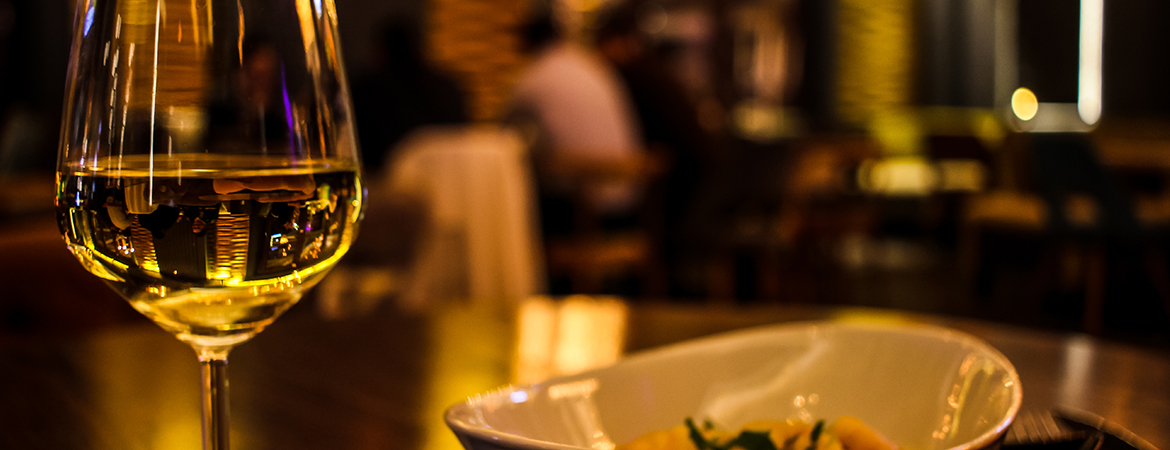
The dry whites represent more than 10% of the production as Bordeaux and Cremant de Bordeaux. Even though most are best to drink when young and fresh like in the Entre-Deux-Mers, some are looked after because of their complexity, power and potential to age, like the Pessac-Leognan.
The dry wines are light and fresh, or structured and oaky; The Entre-deux-mers, more fresh are best served with shellfish. White Graves are great with a fine and delicate dish. Blaye Côtes de Bordeaux on the fruity side are great with grilled fish and cheese. Pessac Leognan are best with summer salads, or a rich complex or spicy dish.
The Sweet Whites have two categories of Mouelleux and Liquoreux. The liquoreux contains more residuel sugar. They use the same white grapes as the dry but with a dominance of Semillion.
The most famous appellations are also classified as grand cru, Premier Cru, second cru: Sauterne and Barsac. Those wine are served very fresh as appetizer, dessert, with meat dish that are not too sweet or spicy, and cheeses.
Best of Bordeaux food
Seafood and Shelfish
When it comes to shellfish the region has outstanding mussels, oysters, shrimps, crabs, cockles, clams, whelks, scallops and a lot more. Try a plateau de fruits de mer, a plate of mixed cold shellfish or seafood, then move on to a merrine, a terrine of lobster, cod or scallops. You will find a huge range of fish including ray, cod, hake and eels. And some are quite original like Lamprey in chocolate sauce, or Eels alevin, or the Estuary white shrimps in Anis sauce, and the famous Esturgeon caviar.
Meat and Poultry
The region's signature dish is the ‘Entrecôte marchand de vin’, calso called Entrecôte à la Bordelaise, a world known dish of rib steak cooked in a rich gravy made from Bordeaux wine, butter, shallots, herbs and bone marrow. Or you may try the best boeuf Bazadais, beef raised neart Bazas. Lamb lovers will enjoy Agneau de Pauillac, meat from lambs raised on the salt marshes round Pauillac, and often served with truffles, or try Mijote d'agneau aux mojettes, lamb cooked with white beans. Snails are popular and are often served in a casserole with wine, tomatoes and cognac.
Sweet treats
The most famous include the Cannelés, caramelised brioche-style pastries, and the famous marrons glacés, candied chestnuts or noisettines du Medoc, roasted hazelnuts rolled in sugar.
Best Bordeaux hotels
Hotels in Bordeaux blend elegance with excellent service and location.
The Regent is a grand hotel in central Bordeaux on the Place de la Comédie that offers sumptuous, refined rooms decorated with a mix of rich 18th and 19th century furnishings and chandeliers, and dashes of bright color. In 2015, Gordon Ramsay took control of the formerly Michelin-starred Le Pressoir d’Argent restaurant, which has always been its main draw. Designer Jacques Garcia made this hotel look gracefully traditional and vibrantly modern at the same time, with old stone and wrought iron buffed up and set off with rich fabrics, bright colors, with lots of flowers and plenty of light. The Regent is an attractive 18th-century Bordeaux reviewed and corrected for the elegant, and a 21st-century comfort-seeking classes. In recent times, it has added a tip-top spa.

The luxurious ‘Source of Caudalie’ is set on a lake amid the vineyards of Château Smith Haut Lafitte, one of the great Pessac-Léognan wines. It's just 20 km south of Bordeaux city centre and around 25 km from Bordeaux airport. Caudalie pioneered the notion of vinotherapy, with treatments combining the anti-ageing properties of polyphenols contained in grapeseeds and the spa's own natural hot-water spring. Occupying a wooden building inspired by the region's old tobacco drying sheds, there are 20 treatment rooms, a room for relaxing over tea and beamed indoor pool. I bubbled away in a barrel of grape marc, before a crushed cabernet scrub, while other star treatments include the Pulp Friction massage and merlot, honey, wine and vine flower wraps.
La Villa is precisely the refuge you need while staying in the heart of the city of Bordeaux. Marginally off-centre, the chambres-d'hôtes (b&b) affords a breathing space of elegance and considerable comfort. Walk in off the street through the gun-metal grey doors, and a fine porch, you find an urban paradise. Here are small lawns and a white dressed-stone house, many plants (including a micro-vineyard), art and light, unsuspected terraces for the taking of apéritifs, and a salon-cum-library with free coffee and an honesty bar. The impression is of a marriage of finesse to conviviality. It is quite a surprise.







